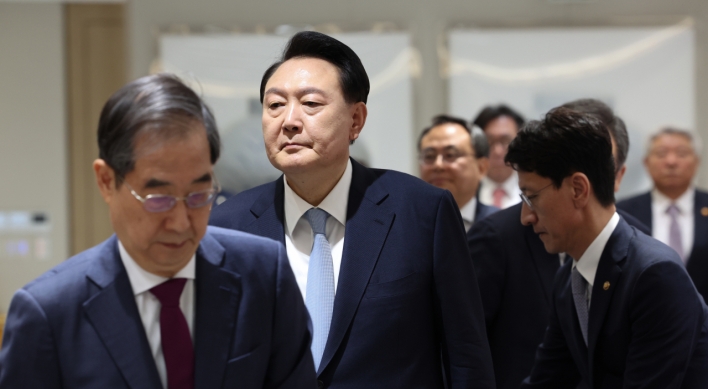[Robert J. Fouser] The 386 Generation’s first president
By Robert J. FouserPublished : Jan. 28, 2022 - 05:31

Regardless of who wins, the election marks an important generational change in South Korean politics. The top three candidates in polls are all members of the 386 Generation that has sat at the center of social change since the 1980s. The term “386” refers to people who were born in the 1960s, attended university in the 1980s, and were in their 30s in the 1990s. The generation now finds itself in its 50s with its oldest members in their early 60s and is also referred to as the “586 Generation.” Members of the generation now hold leading positions throughout South Korean society, and the next president will be the first from this generation. To date, none of the top two candidates in presidential elections have been born later than 1953.
What does the arrival of the 386 Generation to the Blue House mean for South Korea? A brief history of the generation will help answer this question. The economic boom that propelled South Korea to its status as a developed country took off in the 1960s. The boom was based on industrialization as droves of young workers left rural areas to work in factories in booming cities. Rapid economic growth and urbanization meant many more people in this generation grew up in cities than previous generations. This meant better access to education and health care compared to previous rural-based generations.
Another defining characteristic of the 386 Generation is the Yushin order in the 1970s. President Park Chung-hee took power in a coup d’etat in 1961 and ruled firmly as he led the push for industrialization. In 1972, he amended the Constitution to concentrate more power in his hands. The result was more aggressive persecution of political opponents and stronger control over society. The generation spent its formative years in regimented schools that reflected the rigidity of society overall.
Economic growth, urbanization, and Yushin came together in the push for democratization in the 1980s. Since its founding, South Korea has had dissidents who protested authoritarian governments. Some, such as Kim Dae-jung and Kim Young-sam, became leaders in the 1980s and later presidents. The difference between the 386 Generation and previous generations is the breadth and depth of support it gave to political activities. University student leaders worked with older activists to stage large student demonstrations in the mid-1980s. The 386 Generation were the foot soldiers of the democracy movement.
As the 386 Generation entered early middle age in the 1990s, it embraced entrepreneurship and technology as computers and the internet went mainstream, particularly after the Asian Financial Crisis in 1997. The crisis hurt older generations badly, but the 386 Generation was young enough to escape the worst and start over. It remained interested in politics and was the energy behind Roh Moo-hyun’s successful campaign for the presidency in 2002.
The ascent of the 386 Generation to the presidency means that it has reached its peak of influence. Another president or perhaps even two might come from this generation, but most of it will be close to retirement by the next election in 2027. This leaves two interesting questions. What will the 386 Generation do at its peak of influence? And what will it do as its influence wanes?
The generation’s unique combination of drive, idealism, and rigidity gives it confidence that other generations lack. This means lots of big ideas and big plans. It also means resentment from other generations, particularly the younger generations, who see the 386 Generation as rigid and overbearing. Expect cycles of big plans frustrated by big pushbacks.
The 386 Generation is wealthier, both from savings and pensions, and much better educated than previous generations. These two factors will help it exert agency in developing a new life. It will be the first generation of Korean retirees that looks like retirees in other developed countries. Large in number, the generation will continue to exert influence over politics with its votes and over social trends with its consumption patterns. Expect a steady rise in news about retirement lifestyles and growing financial insecurity among younger generations.
Robert J. Fouser
Robert J. Fouser, a former associate professor of Korean language education at Seoul National University, writes on Korea from Providence, Rhode Island. He can be reached at robertjfouser@gmail.com. -- Ed.








![[KH Explains] How should Korea adjust its trade defenses against Chinese EVs?](http://res.heraldm.com/phpwas/restmb_idxmake.php?idx=644&simg=/content/image/2024/04/15/20240415050562_0.jpg&u=20240415144419)









